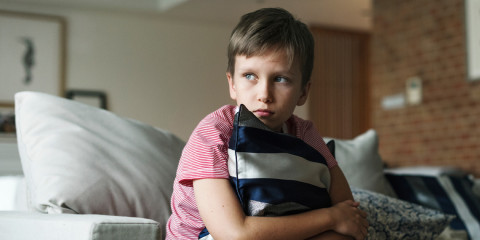
A study of autistic children and adolescents in Australia showed that those suffering from anxiety, depression or similar symptoms (apart from autism) showed a more pronounced tendency to try to mask their autistic traits in social situations. Adolescents were also more likely to camouflage their autistic traits than children. The study was published in Autism Research.
Autism or autism spectrum disorder is a neurodevelopmental disorder characterized by communication and social difficulties, restricted interests and repetitive behavior. It is more common in boys than in girls. On the other hand, studies show that clinicians and teachers are less likely to detect autistic traits in girls than in boys.
Camouflaging of autistic traits has been identified as a potential barrier to early identification of autism. Camouflaging is a set of behaviors intended to hide or mask one’s autistic traits in social situations. It is a coping strategy applied in order to “fit in.” It first develops during childhood and adolescence. While camouflaging, children may deliberately copy body language of another person or mimic facial expressions, gestures, interests, and topics of conversation.
Research indicates that engaging in camouflaging is exhausting and may led to detrimental health outcomes, such as stress, anxiety and depression. While early researchers have often seen camouflaging as something positive, autistic people themselves describe it as “adaptive morphing” in response to social, emotional and physical risk of harm. It is a survival strategy.
Study author Alice Ross and her colleagues aimed to examine how much autistic children and adolescents engage in camouflaging. They expected that camouflaging would be higher in females than in males, that females will be rated by their parents — but not by clinicians — as more impaired than males, and that camouflaging will be associated with the intensity of internalizing symptoms (problems in the internal psychological functioning of a person, such as depression, anxiety, etc.).
Participants were 359 girls and 374 boys diagnosed with autism spectrum disorder (age ranged between 4 and a bit below 18 years). The researchers used the Autism Diagnostic Observation Schedule to assess social communication, social interaction, play and restricted and repetitive behaviors of participants.
Parents completed assessments of children’s social communication (the Social Responsiveness Scale) and of emotional and behavioral difficulties (the Child Behavior Checklist). Camouflaging was estimated as the difference between scores on assessment of difficulties given by clinicians and those given by parents. Parents reporting more difficulties than clinicians indicates that the child was camouflaging autistic traits while interacting with the clinician.
Results showed that parents of girls reported more communication difficulties for their children than parents of boys. There were no gender differences in assessments given by clinicians. Results also showed that children above 13 years of age had more pronounced camouflaging that children below 13.
Higher camouflaging scores were associated with more pronounced internalizing symptoms i.e., higher levels of depression, anxiety or similar symptoms. This association was independent of age, gender or intelligence of the person.
“This research provided evidence for the role of camouflaging in autistic children and adolescents, including the presence of gender differences in parent and clinician reports of autistic traits, and the relationship between camouflaging and internalizing symptoms such as anxiety and depression. It also highlighted the potential impact of age on camouflaging, although further research is required to understand this in more depth,” the researchers concluded.
This study broadens scientific knowledge on the social functioning of children and adolescents with autism. However, it also has limitations that need to be considered. Notably, the study design does not allow for any cause-and-effect conclusions to be made. It remains unknown whether more extensive use of camouflaging leads to internalizing symptoms or vice versa.
Additionally, the study authors did not interview and assess the children themselves, but only analyzed data on these children that was available in the Simons Foundation Autism Research Initiative’s (SFARI) Simons Simplex Collection (SSC) database.
The study, “The relationship between camouflaging and mental health in autistic children and adolescents”, was authored by Alice Ross, Rachel Grove, and John McAloon.